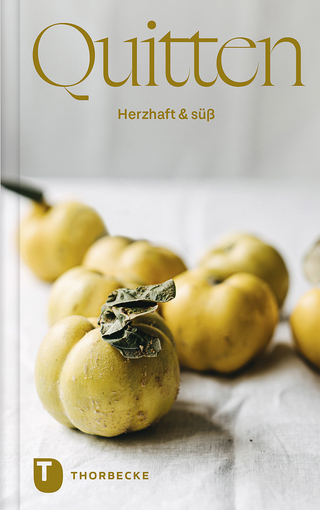
At the Chef's Table
Stanford University Press (Verlag)
978-0-8047-8797-0 (ISBN)
This book is about the creative work of chefs at top restaurants in New York and San Francisco. Based on interviews with chefs and observation in restaurant kitchens, the book explores the question of how and why chefs make choices about the dishes they put on their menus. It answers this question by examining a whole range of areas, including chefs' careers, restaurant ratings and reviews, social networks, how chefs think about food and go about creating new dishes, and how status influences their work and careers.
Chefs at top restaurants face competing pressures to deliver complex and creative dishes, and navigate market forces to run a profitable business in an industry with exceptionally high costs and low profit margins. Creating a distinctive and original culinary style allows them to stand out in the market, but making the familiar food that many customers want ensures that they can stay in business. Chefs must make choices between these competing pressures. In explaining how they do so, this book uses the case study of high cuisine to analyze, more generally, how people in creative occupations navigate a context that is rife with uncertainty, high pressures, and contradicting forces.
Vanina Leschziner is Assistant Professor of Sociology at the University of Toronto.
Contents and Abstracts1Exploring the World of Elite Chefs chapter abstractThis chapter begins with the central question of the book, namely how chefs navigate a context where they have pressures to show creativity and originality, and conform to tradition to appeal to customers and run a profitable business. It then presents an overview of the themes explored in the book, beginning with a brief description of the elite restaurant worlds of New York and San Francisco, and the jobs of chefs. The five characteristics that comprise a Mode of Cultural Production are introduced and explained, followed by an outline of the characteristics of cultural fields and of culinary fields specifically. The chapter ends with an overview of career structures in cuisine, including occupational ranks and the organization of restaurant kitchens.
2Career Paths in High Cuisine chapter abstractThis chapter analyzes the career paths of elite chefs. It begins by describing how chefs choose this occupation, a choice typically experienced as unintended, driven by early experiences working at restaurants as temporary employment or growing up in a food-loving family. There are multiple ways to enter the occupation (culinary school is not requisite), and a variety of means to move up the ladder, including within a kitchen, across restaurants, and across culinary fields. Careers in kitchens do not follow a standardized path; culinary professionals go though different positions to become executive chefs. Internal mobility and social networks are the most common means for mobility in cuisine, where careers are episodic, made up of particular highlights—jobs often obtained somewhat randomly. This chapter describes the career paths in high cuisine in New York and San Francisco and analyzes the factors that lead to the career patterns in these cities.
3Categories and Classifications in Cuisine chapter abstractThis chapter analyzes the role of categories and classifications in cuisine. The cuisine chefs choose has significant consequences both for the dishes they can put out, and how their restaurants will be reviewed and rated in the media. Categories and classifications matter in any cultural endeavor because they influence how creators understand their work, how arbiters evaluate it, and how consumers perceive it. Ingredients and techniques are the elements that define culinary styles, classifying them into regional categories, and with regard to innovativeness. Restaurant critics and the media have a large stake in the classification of chefs and culinary styles, determining how they will be perceived, and the ingredients and techniques chefs will be able to use without breaching boundaries. This chapter explains how chefs develop their understandings and narratives to control and manage their classification projects.
4Managing a Culinary Style chapter abstractThis chapter examines how chefs strategize to differentiate from others. Chefs look for new ideas to navigate the balance between originality and conformity to established styles that is necessary to survive in a cultural field. At the same time, they need to manage a fitting distance from other chefs. Like creators in any field, they borrow ideas from others to obtain inspiration, but unlike creators in many fields, they have no means to publicly give credit for the borrowed ideas. Developing a style that is not too derivative and managing relations with peers is much harder where creativity occurs through minor changes, and the difference between styles is fuzzy. This chapter analyzes the different strategies—culinary, cognitive, and rhetorical—chefs engage in to avoid the impression that they are too closely derivative, and highlight their difference rather than similarity from other chefs.
5Cognitive Patterns and Work Processes in Cooking chapter abstractThis chapter describes the cognitive and practical processes whereby chefs design dishes, from an initial idea until a dish goes on the menu. How chefs go about creating dishes is tightly associated with their views on cooking and their culinary styles, and with the cognitive patterns through which they think about food and work on new ideas. Chefs approach cuisine as either a conceptual or practical activity, and this informs how they conceive of new ideas and create dishes. Some chefs choose a special context conducive to deliberative thinking to play with ideas and create new dishes. Others are more improvisational and create dishes at random times and places, without much deliberative thought about how they assemble ingredients to make a new dish. In describing the processes whereby chefs create dishes, this chapter engages with understandings of dual-process models of cognition, dispositions, and creativity.
6Culinary Styles and Principles of Creation chapter abstractThis chapter explains how chefs use culinary styles to position themselves vis-à-vis others in their field, and struggle to gain legitimation and recognition through their food and representations of their styles. Culinary styles are means for chefs to position themselves in the field in terms of status, but also to associate or dissociate from other chefs, hence to encourage or discourage relations with them. Chefs thus use culinary styles strategically in view of where in the field they want to be and where they want to take their careers. What is the nature of the relationship between chefs' reputation and their dishes? What leads chefs to turn away from the food they were trained to cook? Why do they innovate on culinary traditions? How do they earn legitimacy and reputation? These are some of the central questions answered in this chapter.
7Mapping Out Creative Patterns chapter abstractThis chapter places chefs in their field to explain the patterning of relations between culinary styles, self-concepts, and field positions. Through the analysis of the distribution of culinary styles and self-concepts in the culinary fields of New York and San Francisco, the chapter explains chefs' choices about their styles and representations, and compares the internal logics and social organization of the two fields. Chefs' actions cannot be explained without according independent analytical weight to self-understandings. But chefs develop a sense of who they and where they want to go from their field positions—it is from here that their logics of action develop and guide them in navigating the field. The chapter closes with a discussion of the analytical and theoretical implications of this study of culinary fields, with a focus on the tenets of field theory, contributions of pragmatism, routine behavior, creativity, and self-concepts.
Appendix: Methodological Appendix chapter abstractThe methodological appendix describes the research conducted for this book. It first describes in detail the nature of the fieldwork, the objectives of interviews with chefs and observation in restaurant kitchens, and it outlines all the complementary and supplementary data collected for this study. This is followed by an explanation of the sampling strategy to select and classify restaurants into categories, and the sources used to create the sample in each of the two cities. This section of the appendix closes with the basic interview questionnaire used for interviews with chefs. The appendix also includes a description and explanation of the content analysis of critics' evaluation of innovation in restaurant reviews.
| Erscheint lt. Verlag | 3.6.2015 |
|---|---|
| Zusatzinfo | 4 tables, 8 figures |
| Verlagsort | Palo Alto |
| Sprache | englisch |
| Maße | 152 x 229 mm |
| Gewicht | 499 g |
| Themenwelt | Sachbuch/Ratgeber ► Essen / Trinken ► Grundkochbücher |
| Geisteswissenschaften ► Geschichte | |
| Sozialwissenschaften ► Soziologie ► Allgemeine Soziologie | |
| Wirtschaft ► Betriebswirtschaft / Management ► Unternehmensführung / Management | |
| ISBN-10 | 0-8047-8797-2 / 0804787972 |
| ISBN-13 | 978-0-8047-8797-0 / 9780804787970 |
| Zustand | Neuware |
| Haben Sie eine Frage zum Produkt? |
aus dem Bereich


